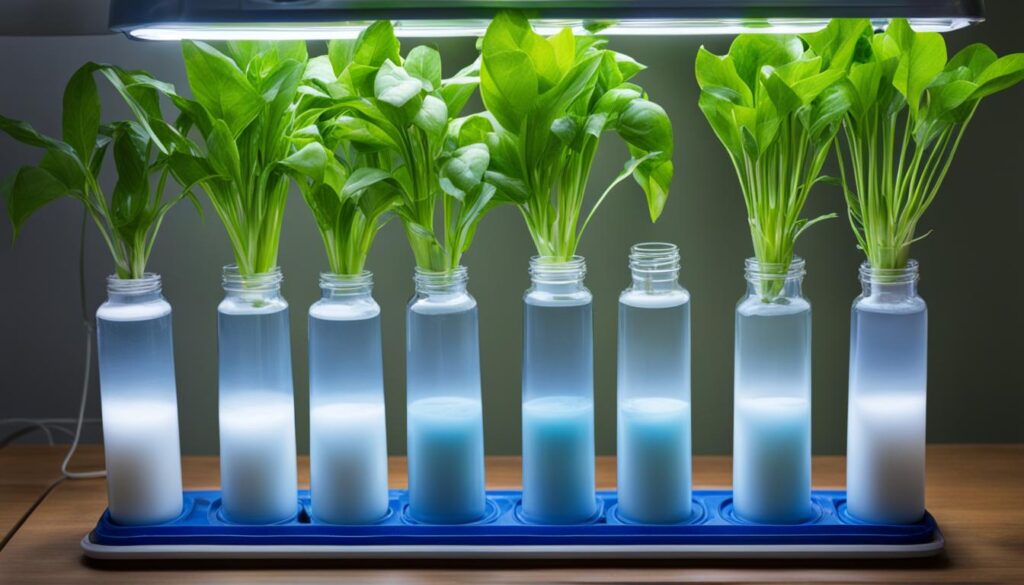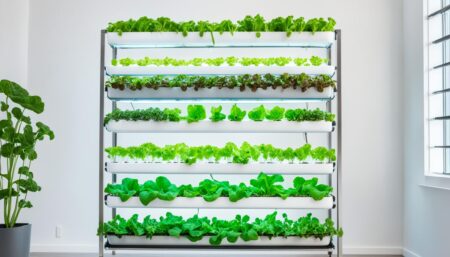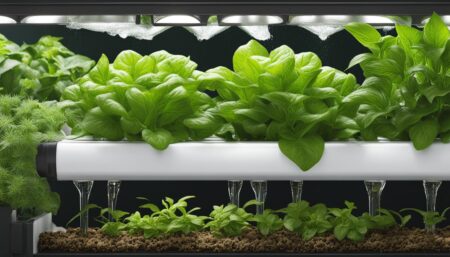Welcome to our comprehensive guide on hydroponic pH fluctuation solutions. In this article series, we will explore the importance of maintaining optimal pH levels in hydroponic systems and provide practical solutions to address pH fluctuations. Whether you’re a beginner or an experienced hydroponic enthusiast, this guide will equip you with the knowledge and tools you need to ensure a well-balanced and thriving indoor garden.
In the first section, we will delve into the fundamentals of pH levels in hydroponics and their impact on plant growth. Understanding pH and its significance in nutrient absorption will set the foundation for effectively managing pH in your hydroponic system. So let’s dive in and discover how to tackle those pH waves in your hydroponic setup!
Understanding pH Levels in Hydroponics
pH levels play a crucial role in hydroponics, influencing plant growth and nutrient absorption. pH measures the acidity or alkalinity of a solution on a scale of 0 to 14. Most plants thrive in pH levels between 5.5 and 6.5, although some may have specific preferences for slightly more acidic or alkaline conditions. Maintaining the correct pH levels is essential for optimal plant health and productivity.
Proper pH levels ensure that nutrients are readily available to plants, promoting efficient uptake and utilization. When pH levels are out of balance, nutrient deficiencies or toxicities can occur, hindering plant growth and leading to various issues such as stunted growth, yellowing leaves, or nutrient lockout.
To ensure the right pH levels in hydroponic systems, regular testing and adjustment are necessary. By using pH testing tools like litmus strips or pH pens, growers can monitor pH levels in the nutrient solution and make necessary adjustments to keep it within the desired range. Testing pH levels should be done consistently to identify any fluctuations that may occur and take prompt corrective actions.
Understanding the Effects of pH on Plant Growth
pH levels directly affect plant metabolism and nutrient availability. Each nutrient has a specific pH range at which it is most available for absorption. In hydroponics, maintaining the appropriate pH range ensures that nutrients are in their most accessible form for plants to uptake. This promotes healthy growth, improved nutrient uptake, and overall plant vigor.
When pH levels are too high or too low, nutrient imbalances can occur, leading to deficiencies or toxicities. For example, in alkaline conditions, certain nutrients like iron, manganese, or copper may become less available to plants, causing deficiencies. On the other hand, in acidic conditions, nutrients like calcium or magnesium may be excessively available, leading to potential toxicities.
Understanding the effects of pH on plant growth is vital for hydroponic growers. By regularly monitoring and adjusting pH levels, growers can cultivate an ideal environment for plants to thrive and maximize productivity.
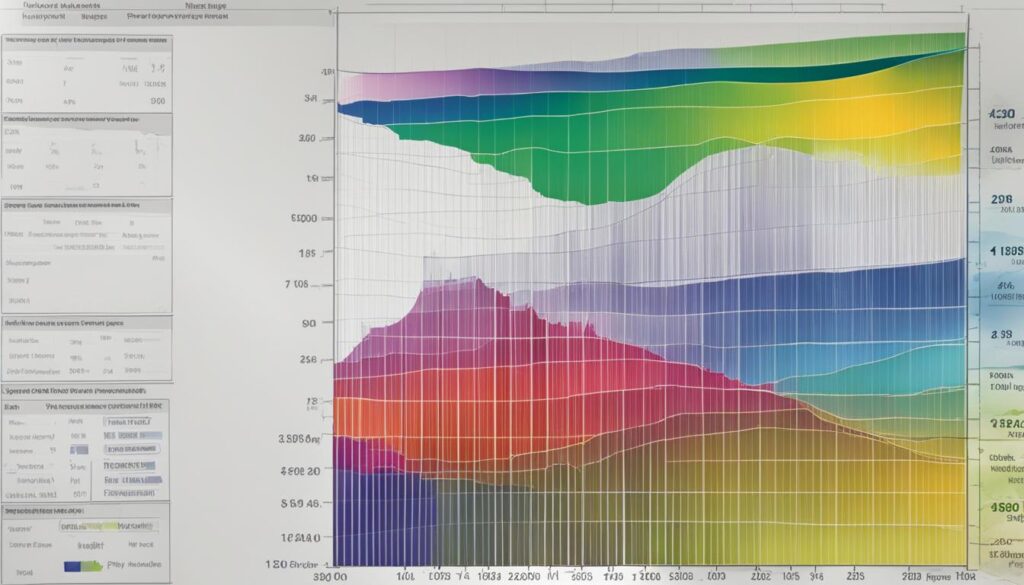
The Importance of pH in Hydroponics
The pH level in hydroponic systems is critical because it affects various aspects of plant growth and nutrient management. Optimal pH levels ensure that plants can absorb all the necessary nutrients from the nutrient solution, leading to healthy and robust growth.
Additionally, maintaining the correct pH range helps prevent nutrient imbalances. When the pH is outside the ideal range, certain essential nutrients may become unavailable to plants, leading to deficiencies. By controlling pH levels, growers can avoid nutrient deficiencies and ensure that plants have all the necessary elements for their development.
Furthermore, pH levels influence the effectiveness of beneficial microorganisms in the hydroponic system. Many beneficial bacteria and fungi that promote plant health and protect against pathogens are pH-sensitive. By maintaining a balanced pH, growers can create an optimal environment for these beneficial microorganisms to thrive and support plant growth.
In conclusion, understanding and managing pH levels in hydroponics are crucial for achieving successful and productive plant cultivation. By regularly monitoring and adjusting pH levels within the desired range, growers can ensure optimum nutrient availability and plant health.
Factors Affecting pH Levels in Hydroponics
When it comes to maintaining optimal pH levels in hydroponic systems, it is important to understand the various factors that can influence the acidity or alkalinity of the nutrient solution. These factors include the choice of hydroponic growing medium, temperature fluctuations, and the quality of the water source used. Let’s explore each of these factors in more detail:
Hydroponic Growing Medium
The choice of hydroponic growing medium can significantly impact pH levels. Some growing mediums, such as coco coir or certain types of rockwool, can release substances that affect the pH of the nutrient solution. It is important to select a growing medium that has a neutral pH or can be easily balanced to the desired pH range. Regular monitoring of pH levels and appropriate adjustments should be made to ensure optimal plant growth.
Temperature and pH Levels
Temperature fluctuations can also influence pH levels in hydroponic systems. Higher temperatures can lead to increased evaporation, which in turn affects the concentration of nutrients in the solution and may lead to pH changes. It is essential to closely monitor the temperature of the nutrient solution and make adjustments as necessary to maintain stable pH levels. Maintaining a consistent temperature environment is crucial for preventing fluctuations in pH.
Water Source and pH
The quality of the water source used in hydroponic systems can have a significant impact on pH levels. Tap water often contains minerals and impurities that can affect pH. It is advisable to use distilled water or treat the water source with reverse osmosis to remove any impurities and ensure a consistent and pH-neutral water supply. This helps to maintain stable pH levels and provides an optimal growing environment for plants.
By considering and addressing these factors, hydroponic growers can effectively manage and control pH levels in their systems. Regular monitoring, appropriate adjustments, and the use of suitable growing mediums and water sources all contribute to maintaining the desired pH range for healthy plant growth.
Monitoring pH Levels in Hydroponics
In hydroponic systems, monitoring pH levels is a crucial aspect of maintaining optimal conditions for plant growth. Regularly testing and adjusting pH ensures that plants can efficiently absorb nutrients and thrive. There are two commonly used tools for pH testing in hydroponics: litmus strips and pH pens.
Litmus strips are a quick and affordable way to measure pH levels. Simply dipping a litmus strip into the nutrient solution allows you to determine the acidity or alkalinity of the solution visually. The strip will change color based on the pH level, which can then be matched to a color chart for interpretation.
pH pens, on the other hand, offer more precise digital readings of pH levels. These handheld devices are easy to use and provide accurate measurements, allowing for precise adjustments to be made. pH pens are particularly useful for those who require more accuracy in pH monitoring or have a larger hydroponic setup.
It is recommended to test pH levels on a daily basis, especially during the initial stages of setting up the hydroponic system. This helps to identify any fluctuations or imbalances in pH early on, allowing for prompt adjustments to be made. By regularly monitoring and maintaining pH levels within the optimal range, you can ensure that your plants are receiving the nutrients they need for healthy growth.
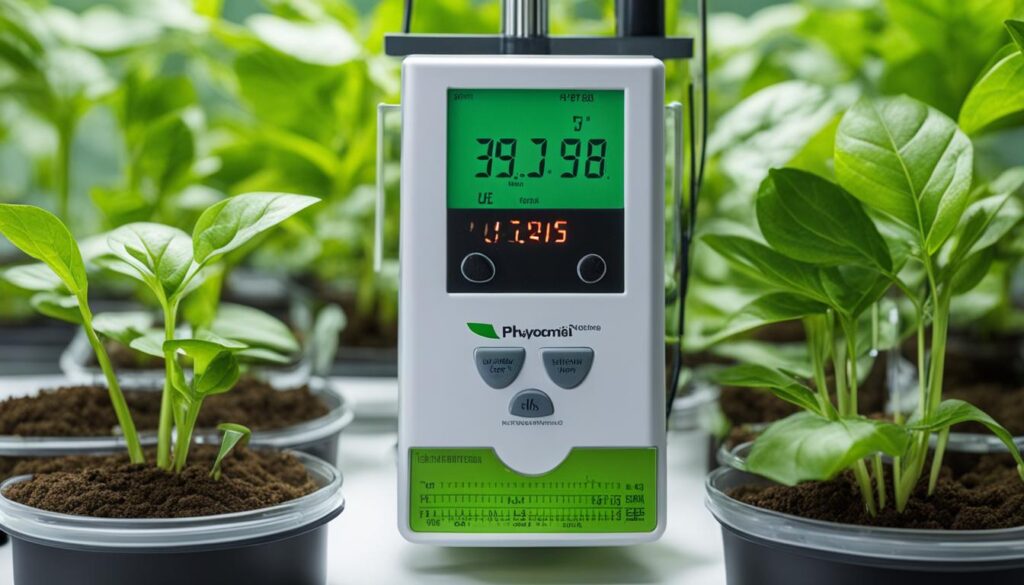
Benefits of pH Monitoring
Monitoring pH levels in hydroponics offers several benefits. Firstly, it helps prevent nutrient deficiencies or toxicities in plants. If the pH is too high or too low, certain nutrients may become unavailable or toxic to the plants, leading to stunted growth or nutrient burn.
Secondly, pH monitoring allows growers to identify and address any issues with their hydroponic system. Fluctuations in pH can indicate problems with the water source, growing medium, or nutrient solution. By regularly testing and adjusting pH levels, growers can maintain a stable and well-balanced system.
Lastly, pH monitoring provides valuable data that can be used to fine-tune the hydroponic setup. By tracking pH levels over time and correlating it with plant performance, growers can optimize their system for maximum productivity and yield. This data-driven approach helps ensure that all elements of the hydroponic system are working harmoniously to support plant growth.
In conclusion, monitoring pH levels in hydroponics is essential for maintaining a healthy and thriving indoor garden. By using tools like litmus strips or pH pens, growers can easily monitor pH levels and make necessary adjustments. Regular pH testing allows for early detection of any imbalances or fluctuations, ensuring that plants receive the optimal nutrient uptake for optimal growth.
Balancing pH Levels in Hydroponics
Maintaining the proper pH levels in hydroponics is essential for optimal plant growth and nutrient absorption. To achieve and maintain stable pH levels, hydroponic growers have various methods and products at their disposal. Here, we will explore some effective solutions for adjusting and balancing pH in hydroponic systems.
pH Adjustment Products: pH Up and pH Down Solutions
pH adjustment solutions, such as pH up and pH down, are specifically designed for hydroponic use. pH up solutions are alkaline and can be used to raise the pH levels in the nutrient solution, while pH down solutions are acidic and can lower the pH levels. These products help maintain stable pH levels by increasing or decreasing the acidity of the nutrient solution as needed. When using pH adjustment products, it is important to follow the manufacturer’s instructions and make gradual adjustments to avoid sudden pH swings that could stress the plants.
Weak Acids as Temporary pH Adjusters
In addition to pH adjustment solutions, some hydroponic growers use weak acids like citric acid or vinegar to temporarily lower the pH levels in their systems. These natural and readily available substances can be used in case of sudden pH spikes and serve as a short-term solution. However, it’s important to note that using weak acids may not provide long-term pH stability, and regular monitoring and adjustment are still necessary.
Automatic pH Controllers for Consistent Stability
For growers who desire consistent and precise pH control, investing in an automatic pH controller is highly recommended. These devices monitor the pH levels in the hydroponic system and automatically adjust the nutrient solution’s pH as needed. Automatic pH controllers can help maintain pH stability over extended periods, reducing the need for manual testing and adjustments.
By employing these methods and utilizing the right products, hydroponic growers can achieve and maintain stable pH levels in their systems. This allows plants to thrive by ensuring optimal nutrient absorption and overall health.
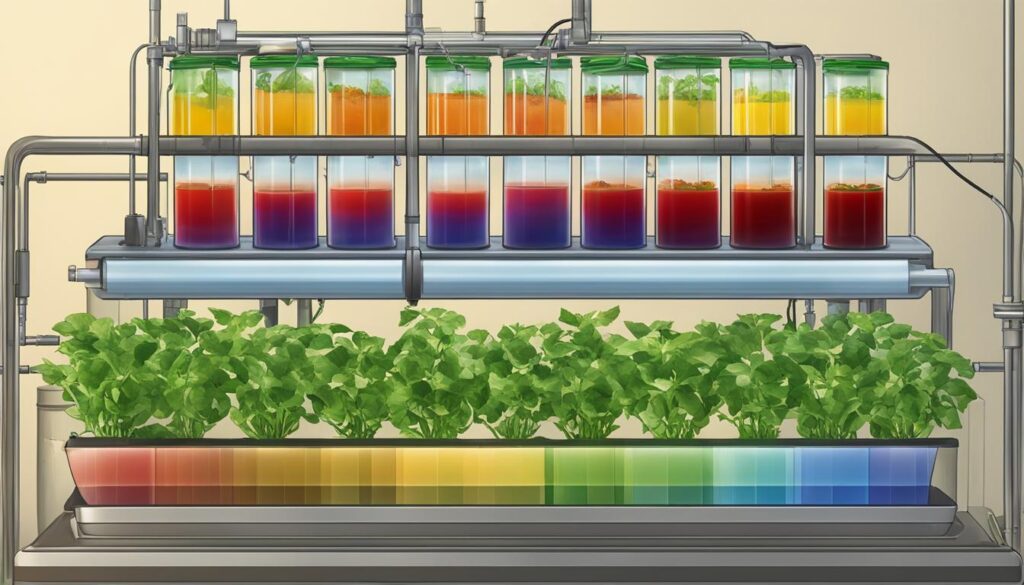
Preventing pH Fluctuations in Hydroponics
P pH fluctuations can have a significant impact on the stability and overall success of a hydroponic system. To ensure optimal plant growth and maintain pH balance, it is crucial to address potential factors that can lead to pH fluctuations. By implementing the following strategies, you can effectively prevent pH fluctuations in your hydroponic setup:
Selecting the Right-Growing Medium
The choice of growing medium plays a crucial role in maintaining pH stability. Different growing mediums can have varying effects on the pH of the nutrient solution. Some mediums, like coco coir, tend to be more acidic, while others, such as perlite, have a neutral pH. It is important to choose a growing medium that aligns with the desired pH range for your plants and regularly monitor pH levels to make any necessary adjustments.
Maintaining Proper Temperature
Temperature fluctuations in a hydroponic system can affect pH stability. Higher temperatures can accelerate evaporation, leading to changes in pH levels. It is important to maintain a consistent temperature within the recommended range for your plants. Using a thermometer can help you monitor temperature fluctuations and make any necessary adjustments to prevent pH instability.
Ensuring Water Quality
The quality of water used in hydroponics can significantly impact pH stability. Impurities in the water, such as minerals or chemicals, can alter the pH of the nutrient solution. It is advisable to use distilled or reverse osmosis-treated water to ensure a consistent and pH-neutral water source. Regularly testing the water quality and making any necessary adjustments will help maintain pH stability in your hydroponic system.
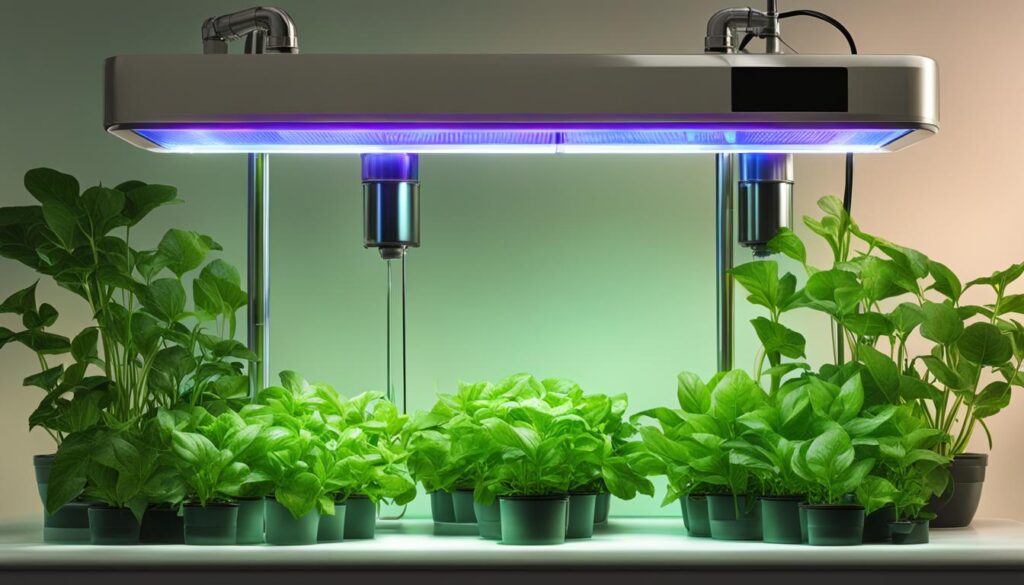
Regular Monitoring and Adjustment
To prevent pH fluctuations, it is essential to monitor and adjust pH levels in your hydroponic system regularly. Use pH testing tools like litmus strips or pH pens to test the pH of the nutrient solution. If necessary, adjust pH levels using pH up or pH down solutions specifically designed for hydroponic use. By consistently monitoring and adjusting pH levels, you can maintain a balanced and stable pH environment for your plants.
By implementing these strategies, you can prevent pH fluctuations in your hydroponic system and create an optimal environment for healthy plant growth. Remember to monitor pH levels regularly, choose the right growing medium, maintain proper temperature, ensure water quality, and make necessary adjustments to maintain pH balance. With proper pH stability, your hydroponic system can thrive, resulting in robust and productive plants.
Conclusion
In conclusion, maintaining optimal pH levels in hydroponics is crucial for the health and growth of your plants. By understanding the factors influencing pH levels and taking proactive measures to address them, you can prevent pH fluctuations and ensure a well-balanced hydroponic system.
Regularly monitoring pH levels using tools like litmus strips or pH pens is essential to stay on top of any pH changes. This allows you to make timely adjustments and maintain pH stability. Additionally, utilizing pH adjustment solutions or investing in a hydroponic pH controller can provide effective solutions for pH fluctuations.
When choosing the best hydroponic pH solutions, it is vital to consider the specific needs of your plants and the characteristics of your hydroponic system. Experimenting with different pH adjustment products and techniques can help you find the most effective solution for your setup.
By implementing these strategies and incorporating a hydroponic pH controller, you can create a thriving indoor garden with optimal pH levels. Remember, maintaining pH stability is key to maximizing plant health and achieving the best possible growth in your hydroponic system.



